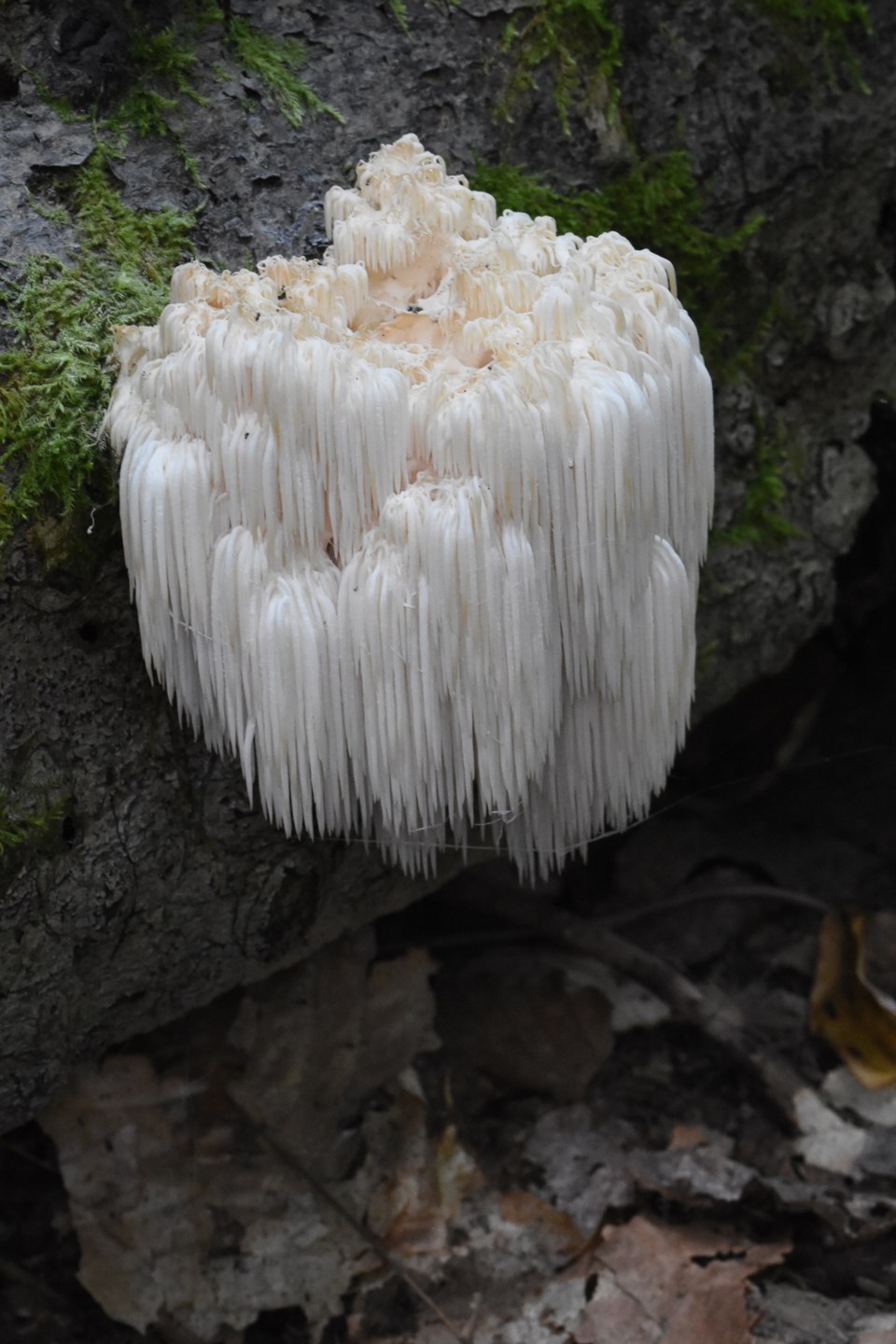If this is late September then it must be mushroom season! Now is the time to look for those fabulous fall fungi that are popping up in woodlots all across the region. White ones, pink ones, purple ones, big, small, stout, delicate... our local mushrooms are a hoot to find and enjoy.
While they be easy enough to find, trying to get a name on a particular species can be a real challenge. By comparison, bird identification is easy. So now you know where you stand, eh?. However, don't give up before you try, just realize that there may well be several really interesting mushrooms that will defy you in getting them pinned down to a specific name. As with many insects, if you even get it lumped into a Family or Genus you're doing well.
A few good mushroom guide books have appeared in recent years, making the task of identification appear easy-breezy. Not so. The books are good, even excellent, yet the hundred or so specimens that illustrate the pages are but a representation of larger Families. Several field guides will give you more selection when trying for a positive identification... or leave you twice as confused. Your choice.
By example, I recently attended a week-long fungi identification training course. I knew just enough about a variety of fungi to sound brash. Quickly learned that there was a fair bit of "I didn't know what I didn't know", leaving me a tad red-faced on the first day. I had hoped to find secret ways to quickly tell one species from another... and was directed to a very large volume that delved into the hundreds of species of a particular Genus... and with it a fairly powerful microscope needed to examine the spores. Yikes!
So if I may, I'd like to back up a bit and share some basic fungus fundamentals. First up, all mushrooms are fungi but not all fungi are mushrooms. No wait, come back. Just kidding. Not really.
Fungi grow underground or in rotting wood, their roots (called mycelia) may be very long (several metres) and spread like a web or net. At the tip of each thread of mycelia is a structure that, when burst above the ground, turns into a mushroom capable of spreading spores. It's kind of like an apple tree in that you can't readily tell what kind of apple tree it is until the fruit appears. And like this apple tree, picking a mushroom does no more harm than picking an apple hurts the tree.
Which brings me reluctantly to the topic of edibility of mushrooms. Some taste quite nice, most taste like rotting wood, a few will kill you. That statement alone should keep you from popping these things in your mouth, but apparently not for some folks. I rarely mention eating fungus when I lead a hike, as the liability is huge that someone in the audience will eventually mistake an edible one (Dave said I could eat it) for a lookalike that is bad news. All mushrooms may be eaten, but some only once.
Mushroom poisonings are tricky to determine, as the effects of a bad one don't appear until several hours, or days, after you eat it. And by then you have forgotten which one was ingested, and trying to find a healthy specimen for identification is very difficult. Just stick to eating the ones that have a barcode on the packaging.
With that out of the way, how does one tell a bolete from an amanita, a puffball from a coral, a sac from a jelly? Step one: read the field guide. Flip through it front to back, back to front, open it randomly, get to know your field guide! It will be in sections, with look-alikes displayed with others of its kind.
Step two is to determine if your find is gilled or not gilled. Big separation here, so take a close look. If the underside has folds and ridges that look somewhat like a fish's gills (c'mon, you've all been fishing before, right?) or if the undersurface is sponge-like, you have determined which section of the field guide to start flipping pages: no, no, no, kinda, maybe, no, no... keep at it until you get a near match.
If slapping a scientific name on a fungus isn't your thing, then just admire their huge variation of form, structure, colour, and habitat. You can even make up your own names but ensure that the "marshmallow brown mushroom" you found at the start of the trail is actually the same one as found later that you are also calling "marshmallow brown mushroom". This is called training in observation skills.
September and October are the months of fungi, so get out on the trails (or even your weedy backyard), look close, and be prepared to be amazed!
